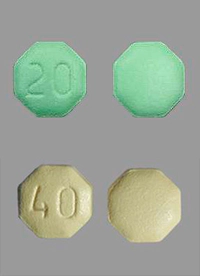DRUGS: WHAT YOU
NEED TO KNOW Booklet

Signs and Symptoms of Oxymorphone Addiction

Courtesy of CT.gov
When someone is talking about opioids, they are actually talking about a large group of drugs with chemical and functional similarities. Many of them are used in medicinal treatment as pain relievers. Some exist solely on the illicit market.
Oxymorphone is one of these opioids. It’s similar in chemistry to oxycodone. Slight differences in chemical structure change how these drugs affect the patients using them. Because of genetic differences between individuals, one opioid might work better or cause fewer interactions with other medications than another opioid.1
Oxymorphone gives doctors another choice when they are prescribing for a patient in pain. It provides approximately the same degree of pain relief as methadone. When it’s prescribed, a doctor may call it Opana, Opana ER (extended release) or Numorphan.
Abuse of Oxymorphone
In 2019, the Drug Enforcement Administration noted that illicit use of oxymorphone was rising. This drug can be abused by crushing and snorting pills of oxymorphone, turning the pills into liquid and injecting them or by swallowing them.2
People abusing this drug normally take higher dosages than prescribed by a doctor, and often take them more frequently. When it comes to opioids, higher dosages will lead to addiction more quickly.
A person who has become addicted to a specific opioid may have preferences for that particular drug, but they will generally use whatever opioid they can get their hands on. The effects are much the same from one opioid to the next, but the potency of one formula can vary drastically from another.
While the Substance Abuse and Mental Health Services Administration monitors the number of people who misuse opioids, they do not track the number that specifically misuse oxymorphone. More than nine million people misused an opioid in 2020, and if a person could get their hands on oxymorphone instead of another opioid they might have preferred, that would be the drug they would consume.3
Physical Signs of Oxymorphone Addiction
The most common sign of opioid use is the “nod”—the opioid user drops off to sleep repeatedly because of the sedating effects of the drug. For this reason, some opioid users incorporate cocaine or another stimulant into their pattern of drug use to prevent that sleepiness. They may take a stimulant at the same time as they consume oxymorphone or take it in the morning to shake off the effects of oxymorphone taken the night before.

Other signs of oxymorphone addiction:
- Lethargy
- Confusion
- Dizziness
- Euphoria
- Nausea
- Stomach cramps
- Vomiting
- Lightheadedness
- Constricted pupils
Behavioral and Emotional Signs of Oxymorphone Addiction
When a person becomes addicted to a drug like oxymorphone, their life takes on a new focus. They feel compelled to avoid the sickness that accompanies withdrawal from the drug. It becomes vital to have the day’s drugs on hand to prevent withdrawal. This necessity begins to color every aspect of their life.

They will begin to neglect the other parts of their life that were important for so long—family, job, career, education, health, hobbies and causes they supported. They will try to hide their distraction the best they can and some people successfully keep their addictions hidden for quite some time. Other people are not so lucky and their lives begin to deteriorate quickly.
They need money to maintain a drug supply. They might have to start selling valuable items they own. Items might go missing from their home, their parents’ homes or their workplaces. Their own bank accounts might be drained, then the accounts of parents, siblings or their employers. If they have trusted positions, it might be a long time before anyone suspects them of the thefts. Some people who become desperate might resort to prostitution or robbing people they don’t know.
As their actions stray from an honest, ethical life, their emotional state will also deteriorate. They will become secretive, hostile, irritable, moody, irrational, accusative and isolated. When these changes are noted, something has derailed this person’s life. It could be oxymorphone or perhaps they have suffered some great loss. Getting them back to a healthy, productive life requires finding out what really happened to cause them to change.
The Long-Term Physical Damage of Oxymorphone Addiction
Oxymorphone doesn’t just cause euphoria and sluggishness, it affects every system in the body, tending to slow them all down. In the intestines, this slowness causes constipation and can lead to intestinal blockages.
Their heartbeat may also become irregular.
The lungs are most directly affected as opioids slow the person’s breathing. During an overdose of oxymorphone, a person’s breathing slows dramatically and can even stop.
Those who misuse any kind of opioid are more likely to suffer from greater lung problems, including pneumonia or COPD, and have higher healthcare costs from these causes than those who do not.4
Oxymorphone Overdose
An oxymorphone overdose can be fatal. Emergency services must be called immediately to administer naloxone, the antidote to opioid overdose. Because oxymorphone is not one of the more potent opioids, it’s possible for naloxone to bring the person back from their overdose and save their life if it is administered quickly enough. With some opioid overdoses, the drugs consumed are so powerful that multiple doses of naloxone must be used, or the person could lapse back into the comatose state of an overdose after initially being revived.
These symptoms may be seen during an overdose:
- The person’s body feels cold and clammy
- They are gasping and choking as they try to breathe
- Their breathing is irregular, shallow and slow
- They do not respond to pain
- They are semi-conscious or unconscious
- Their lips or fingertips may be bluish
Withdrawal from Oxymorphone
If a person runs out of oxymorphone and can’t get another dose of it or some other opioid, they face withdrawal sickness. This is the body’s adjustment to the cessation of toxic doses of opioids. When going through withdrawal from most opioids, the greatest part of the sickness passes within seven to ten days. With a long-lasting opioid like methadone, withdrawal symptoms may last significantly longer.

When withdrawing from oxymorphone, these are the symptoms a person is likely to suffer:
- Anxiety
- Insomnia
- Nausea
- Vomiting
- Diarrhea
- Stomach cramps
- Muscle aches
- Restless legs
Some people have described this withdrawal as the “worst flu possible.”
When a person decides to leave oxymorphone behind and get sober, they will first have to go through withdrawal. It is not a pleasant start to one’s sobriety but with the proper support and medical monitoring, most people can get through it. The urgent cravings for more drugs to end the withdrawal symptoms might be the worst of it. The support and encouragement of family and friends are essential during this time. Proper medical and nutritional support may ease the worst of these symptoms.
No One Wants to Be Addicted, No Matter What They Say
If a person addicted to oxymorphone is offered help, they may refuse it. They may claim that they don’t want help and just want to be left alone.
It’s very likely that they feel they have harmed their loved ones so much that they don’t deserve the help. They may feel so hopeless about getting sober that they can’t even show any interest in recovery. It may be too much to hope for.
In their heart, no one wants to be addicted to drugs or alcohol. No one. No matter what they say. It can take persistence to get through all the barriers they are putting up to get them to accept help. Getting a competent and professional interventionist on the job can help a family succeed in this situation.
Everyone deserves the chance to recover their sobriety and health once again.
Sources:
-
National Institutes of Health. “Differences between opioids: pharmacological, experimental, clinical and economical perspectives.” NIH, 2013. NIH Article ↩︎
-
Drug Enforcement Administration. “Oxymorphone.” DEA, 2019. DEA Publication ↩︎
-
SAMHSA. “Key Substance Use and Mental Health Indicators in the United States: Results from the 2020 National Survey on Drug Use and Health.” Substance Abuse and Mental Health, 2021. SAMHSA Publication ↩︎
-
NIH. “Use of Opioids and Outcomes of Pneumonia: Results From the US Nationwide Inpatient Sample.” NIH, 2021. NIH Article ↩︎


